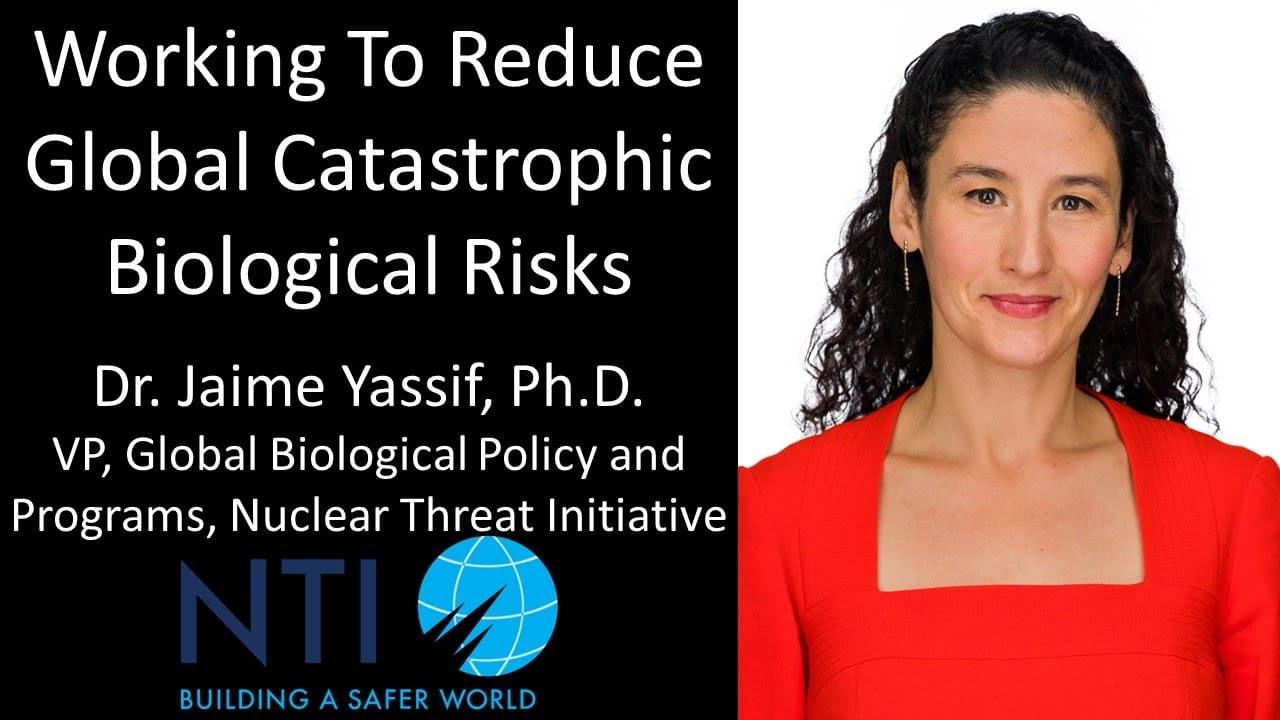1 Bit Pixels Encoded in E. coli for the Display of Interactive Digital MediaAka Could you run Doom on cells?PoSB Final Video 2023Written Report: https://docs…

1 Bit Pixels Encoded in E. coli for the Display of Interactive Digital MediaAka Could you run Doom on cells?PoSB Final Video 2023Written Report: https://docs…

Working To Reduce Global Catastrophic Biological Risks — Dr. Jaime Yassif, Ph.D. — VP, Global Biological Policy and Programs, Nuclear Threat Initiative.
Dr. Jaime Yassif, Ph.D. serves as Vice President of Global Biological Policy and Programs, at the Nuclear Threat Initiative (https://www.nti.org/about/people/jaim…) where she oversees work to reduce global catastrophic biological risks, strengthen biosecurity and pandemic preparedness, and drives progress in advancing global health security.
A previously unknown mechanism for inactivating genes that suppress tumor formation helps explain why cancer risk is associated with an unhealthy diet or unmanaged metabolic conditions like diabetes.
Researchers from Singapore and the UK used mouse models, human tissue, and human breast organoids grown in the lab to find that changes in glucose metabolism could help cancer grow by temporarily disabling a gene that protects us from tumors called BRCA2.
“These findings raise awareness of the impact of diet and weight control in the management of cancer risks,” says the first author of the new study, cancer pharmacologist Li Ren Kong from the Cancer Science Institute of Singapore (CSI Singapore).
At the end of the day it just got too expensive to make games, and too risky to release bad ones. Not to mention the political nonsense. AI is now in the wings poised for a take over game development. Will of mostly taken over around 2030. And, it will quickly be back to the old days.
There’s one topic that’s stayed on my mind since the Game Developers Conference in March: generative AI. This year’s GDC wasn’t flooded with announcements that AI is being added to every game — unlike how the technology’s been touted in connection with phones and computers. But artificial intelligence definitely made a splash.
Enthusiasm for generative AI was uneven. Some developers were excited about its possibilities, while others were concerned over its potential for abuse in an industry with shattered morale about jobs and careers.
Continue reading “Generative AI Is Coming for Video Games. Here’s How It Could Change Gaming” »
Astronomers have picked up a gravitational-wave signal originating from a dramatic collision deep in the cosmos. The event, dubbed GW230529, was recorded by the LIGO Livingston detector in May 2023.
Gravitational waves are caused by the acceleration of massive objects, such as merging black holes or neutron stars. According to Albert Einstein’s theory of general relativity, massive objects like planets, stars, and black holes distort the fabric of spacetime around them.
When these massive objects accelerate or change speed, they create waves that propagate outward at the speed of light. The detection of gravitational waves opens up a new window for observing the universe, allowing scientists to study phenomena that were previously inaccessible, such as the mergers of black holes and neutron stars, as well as the nature of gravity itself.
The research team plans to scale up production of the flow batteries.first appeared on The Cool Down.

Scientists at the Ineos Oxford Institute (IOI) have found a new potential combination therapy to combat antimicrobial resistance (AMR) by targeting two key bacterial enzymes involved in resistance.
Jones’ family home sat to the south of Lake Livingston, in the river bottoms of Coldspring, the San Jacinto County seat. It was overtaken by water shortly after the family left and Jones found safe harbor for their animals, his neighbors told him.
Much of the county was still underwater Friday as crews pulled stranded residents from their homes and roadways.
His family sat among dozens of evacuees who rested on cots and sat around plastic folding tables in Dunbar Gym, a makeshift shelter in an old school building. Many were elderly or infirm, few spoke English or were comfortable telling their stories.
